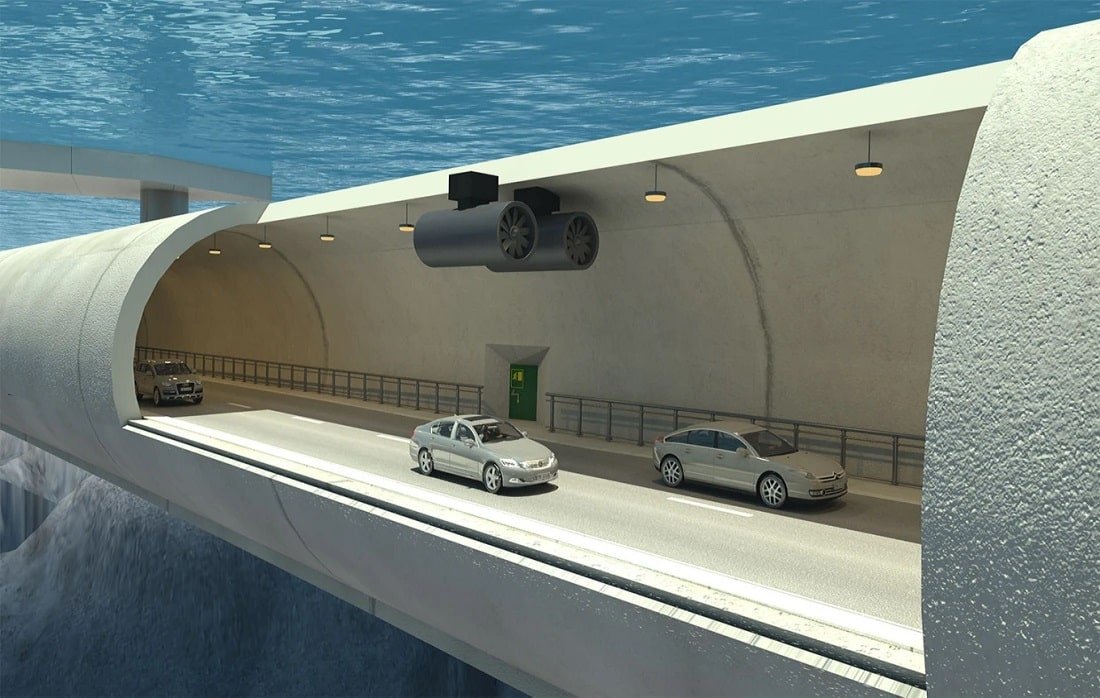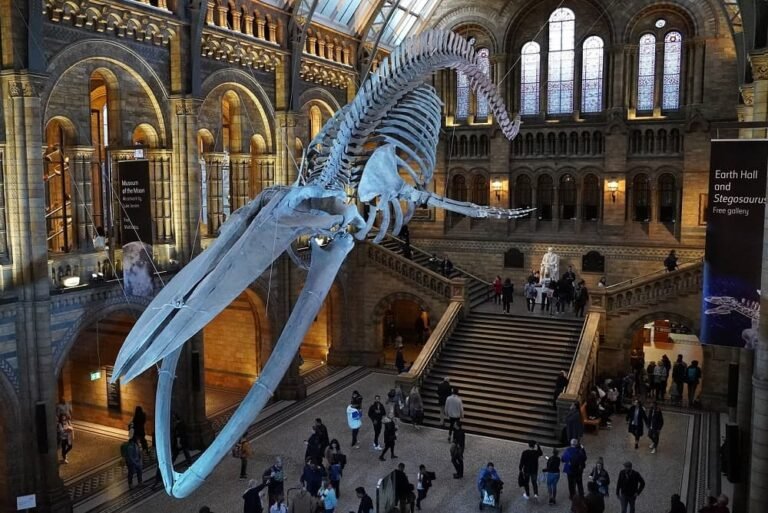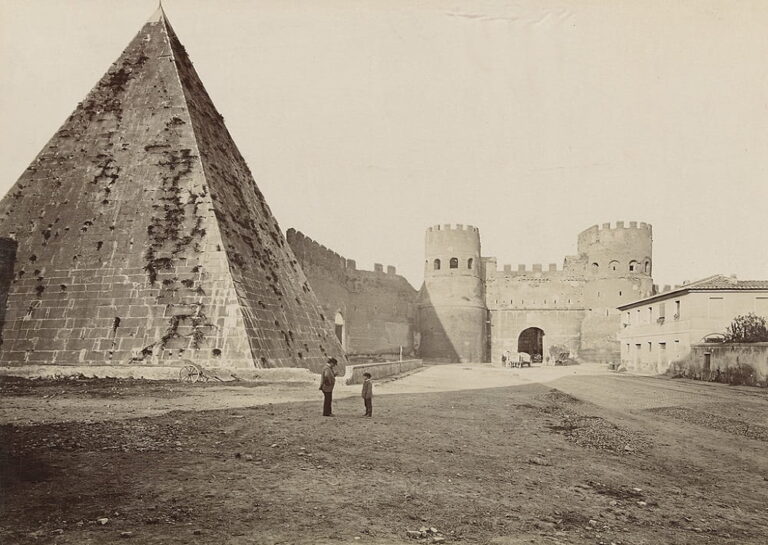Norway Underwater Floating Tunnels: Future of Transport
Last Updated on 29th March 2024 by admin
Imagine driving along a highway, not over land, but beneath the sea. This isn’t science fiction; it’s an ambitious plan unfolding in Norway. Norway is planning to Build World’s First Largest and Floating Underwater Tunnels. Isn’t that amazing?
Norway is well-known for its breathtaking natural beauty, but it is also creating headlines with ambitious infrastructural initiatives. The Norway underwater and floating tunnel project is one of the most fascinating projects currently ongoing. The tunnels will connect rural parts of Norway, making critical resources more accessible and improving the local economy. This article will examine the Norway underwater tunnel project, the Norway floating tunnel, and other related issues.
Table of Contents
Overview of the Norway’s Underwater Floating Tunnel Project

The Norway underwater and floating tunnel project is an innovative infrastructure proposal aimed at connecting distant areas of Norway to the mainland. These aren’t your typical tunnels carved through rock. The concept involves submerged, buoyant tubes anchored to the seabed.
This ingenious solution aims to revolutionize transportation along Norway’s west coast. Currently, traversing fjords relies on ferries, adding significant time and inconvenience to journeys. The floating tunnels promise a faster, uninterrupted flow of traffic.
The project boasts several potential benefits:
- Reduced Travel Time: By eliminating ferries, commuters and cargo transportation could see travel times slashed in half.
- Improved Connectivity: The tunnels would bridge the geographical gaps created by fjords, fostering a more connected nation.
- Environmental Considerations: Compared to traditional bridge construction, floating tunnels could have a lower environmental impact.
However, building an underwater highway comes with its own set of challenges:
- Technical Hurdles: Constructing buoyant tubes that can withstand the forces of the sea is a significant engineering feat.
- Safety Concerns: Maintaining safety standards in case of accidents or emergencies within the tunnel requires careful planning.
- Cost Factor: The project’s estimated price tag is a hefty sum, requiring substantial investment.
Despite the challenges, Norway’s floating tunnel project represents a pioneering effort in transportation infrastructure. If successful, it could pave the way for similar projects around the world. The potential benefits for interconnectedness, travel efficiency, and potentially even reduced environmental impact make this project one to watch. .
This project’s major components are the Norway underwater tunnel and the Norway floating tunnel. The underwater tunnel will be one of the world’s longest and deepest, while the floating tunnel will be hung from pontoons and attached to the seafloor. Both tunnels will be engineering marvels, and their influence on the region is projected to be substantial.
Norway Underwater Tunnel Project: Details and Progress
Norway’s underwater tunnel project is expected to be one of the world’s longest and deepest. The tunnel will be around 27 kilometres long, passing through two fjords and reaching a depth of 390 metres below sea level. The tunnel will connect Kristiansand and Trondheim, two of Norway’s major cities.
The project is still in the planning and feasibility stages, with environmental, geological, and technical evaluations being conducted. The Norwegian government hopes to finish the project by 2035, at a cost of 400 billion NOK ($44 billion USD).
The Norway underwater tunnel project will need cutting-edge technology and experience. The tunnel will have to survive harsh weather, powerful currents, and the weight of the water above it. Engineers will also have to assess the tunnel’s influence on the environment, especially marine life and water quality. Despite these obstacles, the project is generating a lot of excitement and interest.
Floating Tunnel Length and Benefits
Another unique infrastructure project that is part of the Norway underwater and floating tunnel project is the Norway floating tunnel. The tunnel will float on the water since it will be suspended from pontoons and fastened to the bottom. This concept will create a speedier and more efficient transport system while also lowering transportation’s carbon impact.
The floating tunnel in Norway will be around 1,380 metres long and will traverse the Bjrnafjord in Hordaland County. The tunnel will cut travel time from Bergen to Stavanger in half, from five hours to two and a half hours. With an estimated cost of 25 billion NOK ($2.7 billion USD), the project is still in the planning and feasibility stage.
The Norway floating tunnel is a one-of-a-kind engineering achievement that will need innovative design and construction approaches. The tunnel would have to endure severe currents and waves while still providing travellers with a safe and enjoyable experience. Despite the difficulties, the project is generating a great deal of excitement and interest.

Advantages of Norway Underwater Floating Tunnels
The Norway underwater and floating tunnels will provide a range of benefits to the region, including:
- Quicker access to important resources, such as oil and gas fields, fisheries, and aquaculture farms.
- Reduced travel time for residents and tourists, making remote areas more accessible.
- Boosting the local economy through increased trade and tourism.
- Reducing carbon emissions by providing a more sustainable mode of transportation.
These benefits are expected to have a significant impact on the region, both economically and environmentally. The Norway underwater and floating tunnels are a bold step towards improving infrastructure in remote regions, and they’re being closely watched by other countries facing similar challenges.
Challenges and Risks to Build Underwater Floating Tunnels
The Norway underwater and floating tunnels are not without their challenges and risks. Some of the potential issues include:
- High costs: The projects are expected to be expensive, with estimated costs running into the billions of dollars. The Norwegian government will have to carefully consider the financial implications of the projects.
- Environmental impact: The tunnels could have a significant impact on marine life and water quality. Engineers will have to carefully consider the environmental impact and take measures to minimize any negative effects.
- Technical difficulties: The tunnels will require cutting-edge technology and engineering expertise. Any issues during construction or operation could have serious consequences.
Despite these challenges, the Norwegian government remains committed to the projects and is working to mitigate any potential risks.
The underwater and floating tunnels in Norway are a remarkable infrastructure project that is creating a lot of excitement and attention. The projects are projected to bring a variety of benefits, including improved access to critical resources, shorter travel times, and a more environmentally friendly means of transportation. They are, however, not without challenges and risks, such as high costs, environmental impact, and technical difficulties. Nonetheless, the Norwegian government is committed to seeing the projects through to completion and creating a better future for Norway’s remote regions.






